Garum. Ever since I read Apicius I wanted to make, or just taste it. Maybe it was being a teenager (read as large child) fascinated with food other people always thought was weird that drew me to it, maybe the desire to eat the unknown, the old, the historic, I don't know.
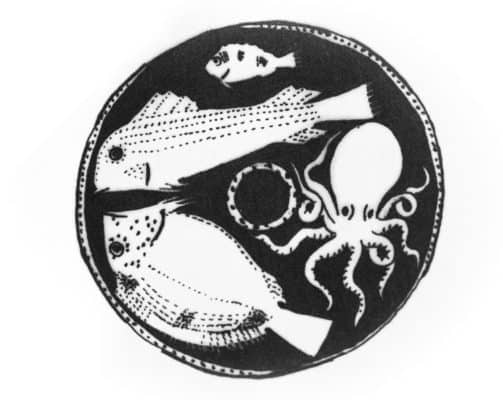
What is it? Garum was the Roman fish sauce made from salting fish and leaving it to putrify age in the sun. Technically the process is autolysis (using compounds in intestines to break down meat, kind of) and not as much fermentation, but there isn't room for that today. Just know that garum was, in a sense, the seasoning of the ancients, for everything.

Depending on your taste that might sound repulsive, or like no big deal, since fish sauce that's on just about evey store shelf somewhere is essentially the same thing: a salted sauce extracted from fish for cooking. Worchesterchire used in American cuisine is a modern day descendant. Don't believe me? Google or read the ingredients of a bottle and look for the word anchovy.
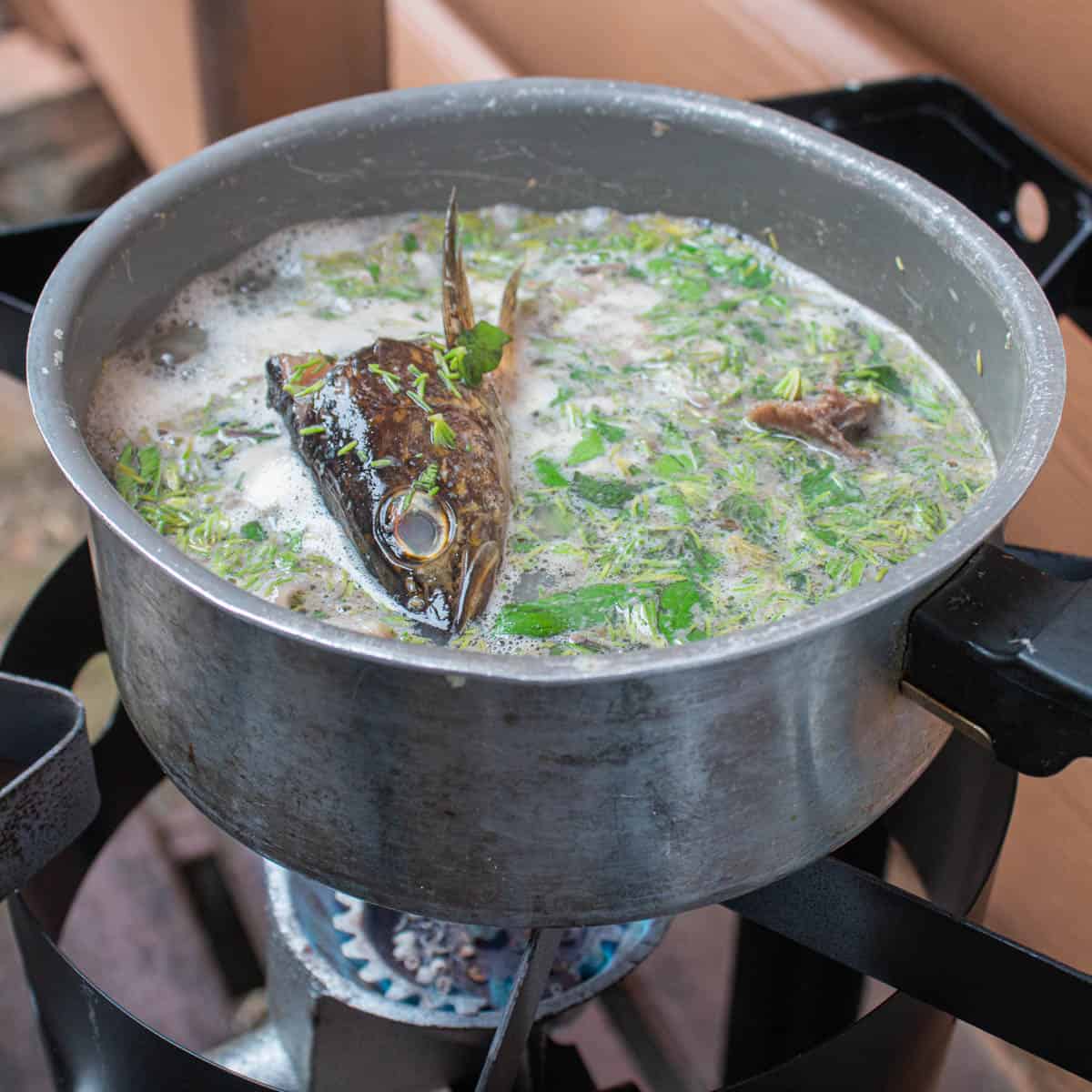
Historical versions
In Geoponica, a literal Byzantine book on ancient agriculture four types of garum are mentioned. Traditional Garum/liquamen was simply salted small, whole fish left to mature in a vessel in the sun for months until the dust settles. After the sauce was ready, the garum was pressed out.
The leftover salted scraps were alec, a less expensive by-product. Another method combined flour, salt and fish, and an overnight stay in a clay pot before aging. A quick garum was made by fish and cooking in a brine salty enough that an egg floats in it. Haimation or black garum was more expensive-only the innards of large fish were used, including the gills.
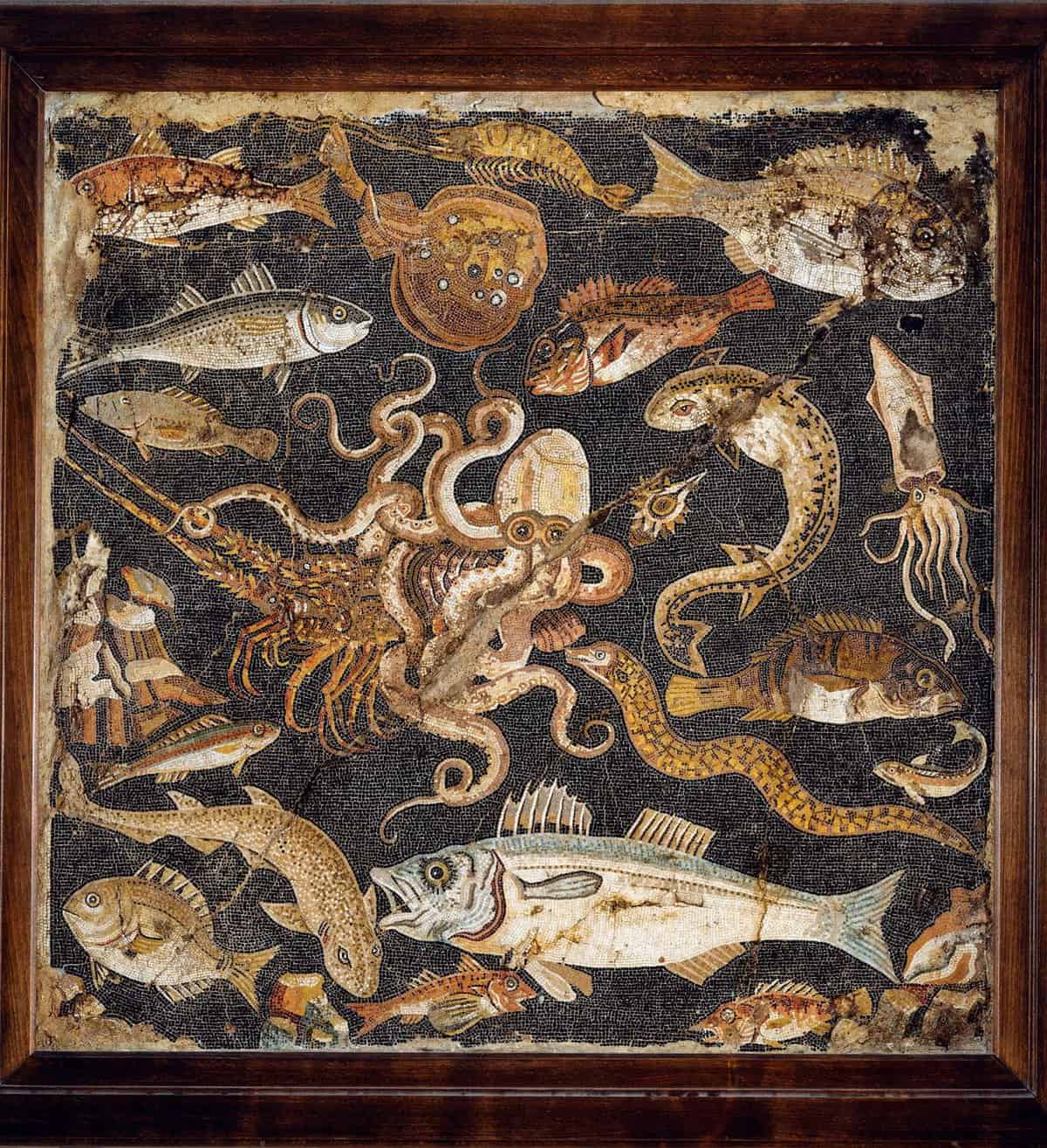
There were other garums too. In Spain a combo of creatures was used: shrimp, sea anemone, urchin, mullet, tuna etc. The most Roman of them all though, was described by Pliny the Elder in Naturis Historia: sociorum.
The most prized garum: sociorum
Sociorum was made by drowning live fish in garum, then proceeding per usual. Apparently it was so spendy that it could cost roughly 15 times the same volume of a popular wine in it's day (Falernian wine). A little macabre, but not surprising when you consider that after the Roman's conquest of Egypt, they learned the art of foie gras and forcefeeding (Egyptians were masters of waterfowl) which they applied to just about every animal they could find, including cows and pigs. Could you imagine how big a fattened beef foie/liver would be?!

All of my Roman fish sauce studies came back when Dad invited me to a fly-in fishing trip this past summer in Canada. I've never had much time to go hunting or fishing, typically I just cook stuff other people gather, so I was pumped. I could see it: clear blue skies, seas of pine trees, crystal cold water and (and Kokanee), and me, the suprisingly skilled angler with innate talent catching perfect walleye with nearly every cast and cooking shore lunch until I grew gills.
Dad's best walleye. My walleye are still in the lake. Reality is cruel. I found out I'm a horrible fisherman, and I was only innately talented at catching rocks, drinking Budwieser and cursing.
Thankfully we were a party of four, and two of the guys were aquatic apex predators. Falling into line, I designated myself camp chef and got as creative as I could with the spartan pantry (that's being generous) the outfitters provided.
I will say I made some magic from every green vegetable in canned form I could stomach, unnamed wonderbread, 2 tomatoes, hot dogs, bacon and that kinda stuff. Iceberg lettuce salad with tomatoes, canned peaches and wild peppermint was an inspiration, under the circumstances.
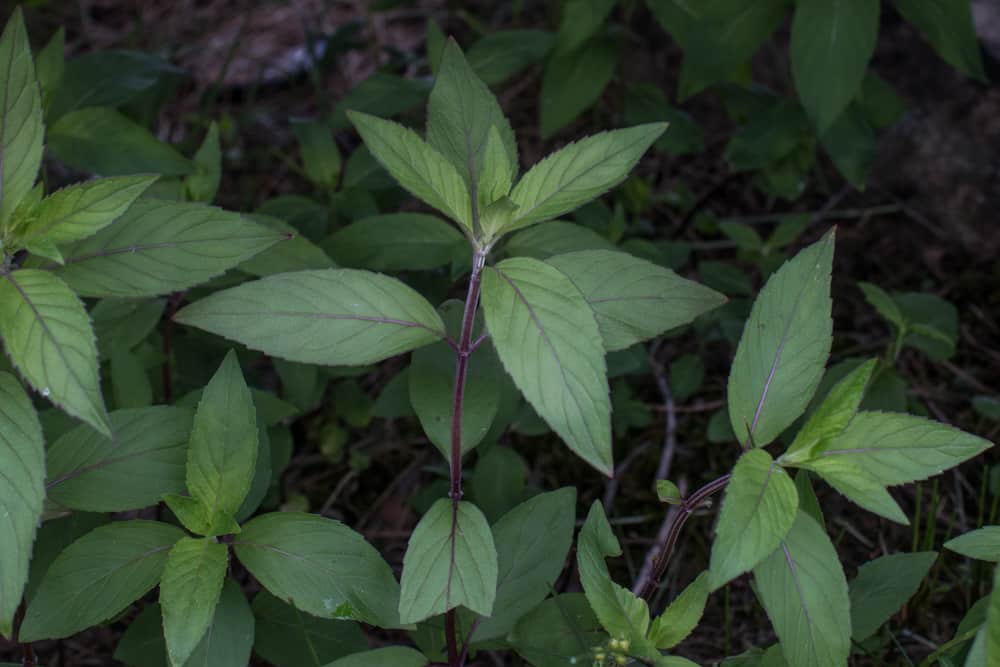
As for the garum, chopping up whole fish I caught myself wasn't going to happen, so I took a couple trips down to the cleaning shack while the apex predators cleaned their haul. I walked in nonchalantly wearing gloves and holding a kitchen shears, bending down into buckets, snipping off every fish intestine and pair of gills I could with the goal of not attracting attention.
I got out the kitchen scale and plastic kitchen cambros I brought for the project, weighed out a 1:6 ratio of salt to fish, and put the salty gut-filled-plastic tub under the work bench to age for as long as the trip would allow.
As I measured and weighed I could feel eyes on me, and I quickly got asked what I was up to. Let me tell you, the looks on their faces when I explained that I was salting fish entrails and leaving them outside so the juice could come out for me to cook with was a priceless, mix of confusion and veiled revulsion.
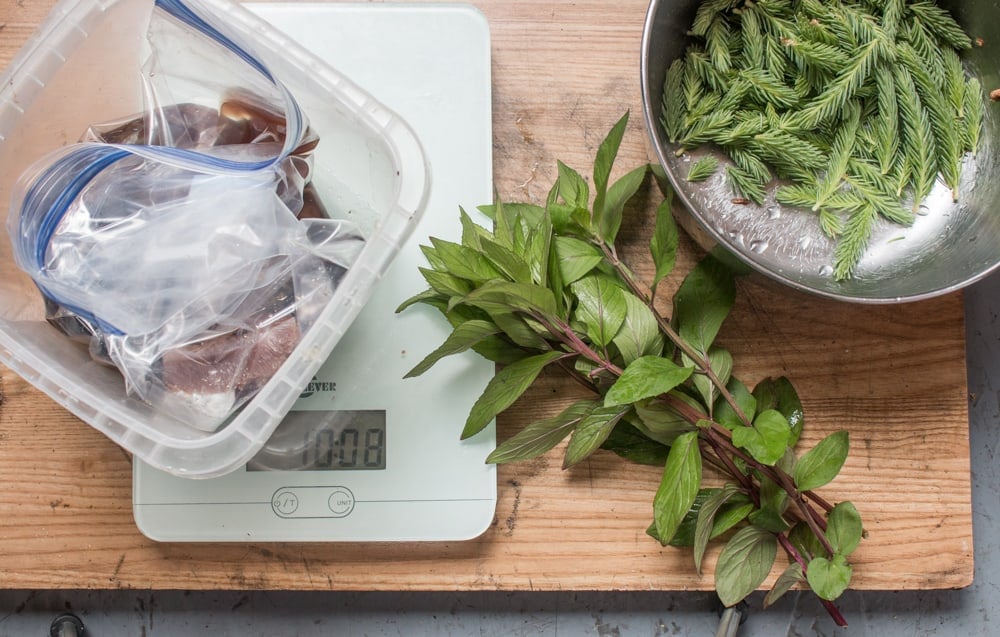
I wanted more than anything to be able to let my fish guts age in peace, but I worried about traveling across the border with the stuff raw, so instead of haimation garum, I was going to have to settle for the Busch-League garum, the cooked and strained version. "It'll still be garum I thought, It'll be fine."

The next day I added some herbs I found around the island we were camped on-spruce tips and a really aromatic peppermint, as some of the garum recipes say to add herbs, wine, etc while aging.
I waited until everyone was gone fishing for the afternoon so I could cook my fish guts in peace, fired up the camp stove, simmered my business and strained it through a fresh, wet paper towel. Afterword I stuck it in a water bottle with a tight fitting lid I could smuggle on the cesna and over the border.
There was a problem though: my garum wasn't pretty. What I had didn't look like fish sauce, or the actual garum I'd purchased a couple times to cook with. My garum was cloudy, off-beige, and no matter how many times I strained it, kept getting fishy protein clouds swimming around in it.
The problem was in applying heat and speeding the mixture up. Good things take time, and the caramel color of a true garum can't be achieved quickly. Heat denatures things, just as cooked meat turns from purple, to red, pink and brown.
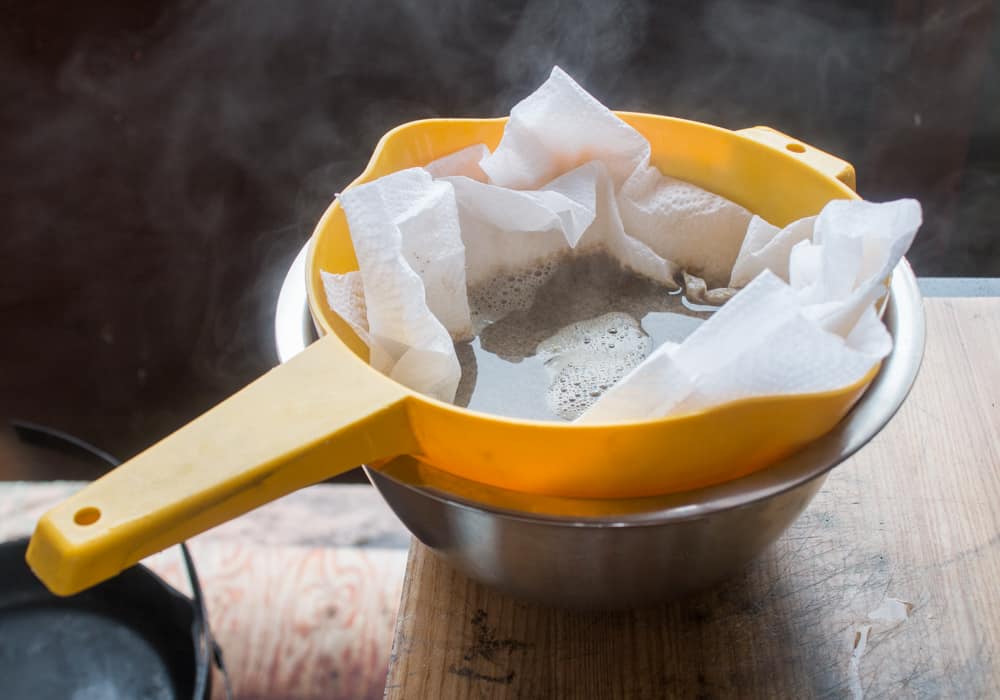
The flavor is naturallly different, you can tell it was made from fresh-water fish. The garum I made wasn't bad per se, it just wasn't what I dreamed of, and in hindsight, I should've seen it coming.
What you season it with, just like a good brick cheese or limburger, won't have the overtones that might turn some people off that are present in the raw product, rather just adds depth and umami you can't quite place.
Colatura=Modern Day Italian Garum
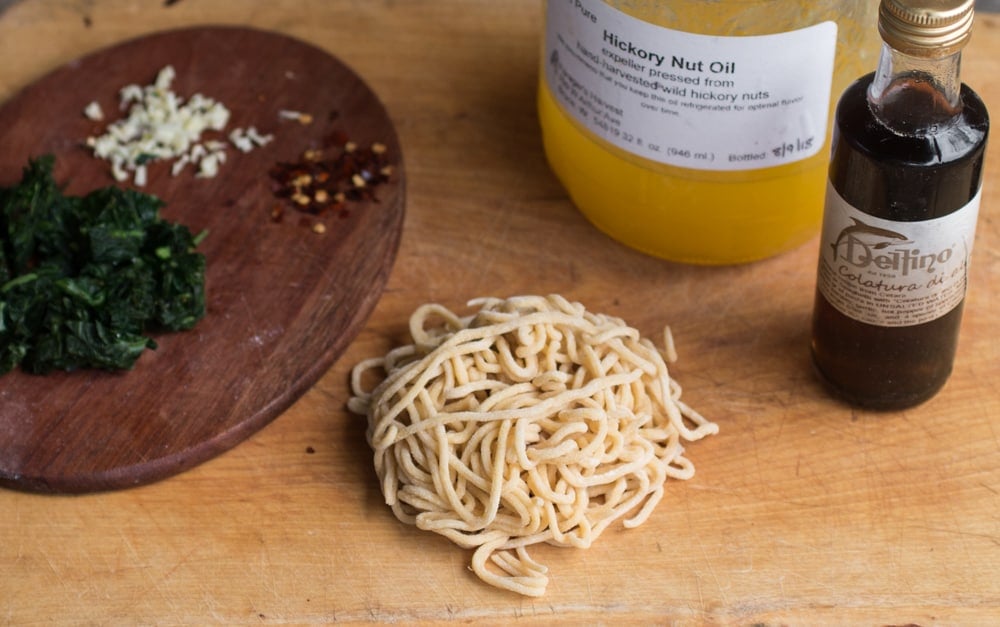
The good thing, is that if you'd like to try garum, or just window shop, you can. I started seeing purveyors selling something called colatura di alici a few years back and mentioning it was like garum, and it is.
Apparently the recipes and texts for garum production were lost in the Dark Ages (like so many things) and then rediscovered in the Middle Ages by monks on the Amalfi Coast who began to make it again. Just look up colatura di alici, and be prepared to spend.
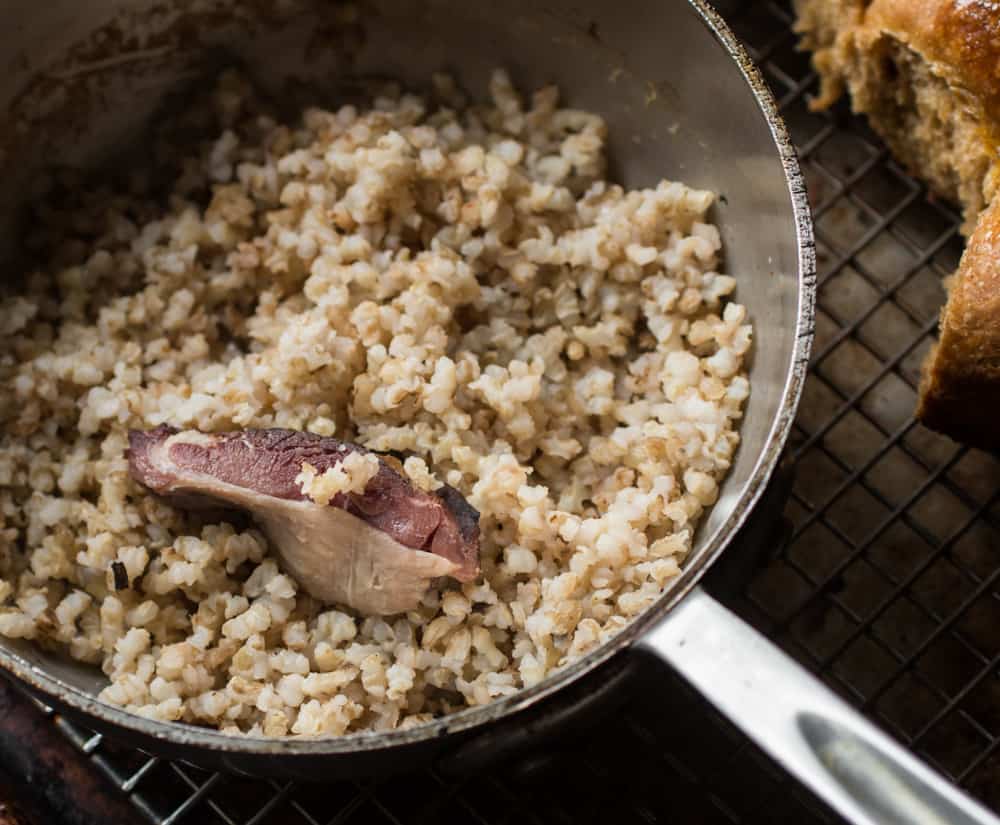
No matter how you feel about fish, cooking with offal, or anything else in here, taste garum drizzled on fresh cucumbers with lemon, or tossed with spaghetti, garlic and oil and you would never know what it was, but you'll get the mouthfilling umami, glutamates and unearthly compounds that make things taste good, but that you can't quite place. It's an edible conversation piece, a unicorn, something to search for, and a way to have your history and eat it too.
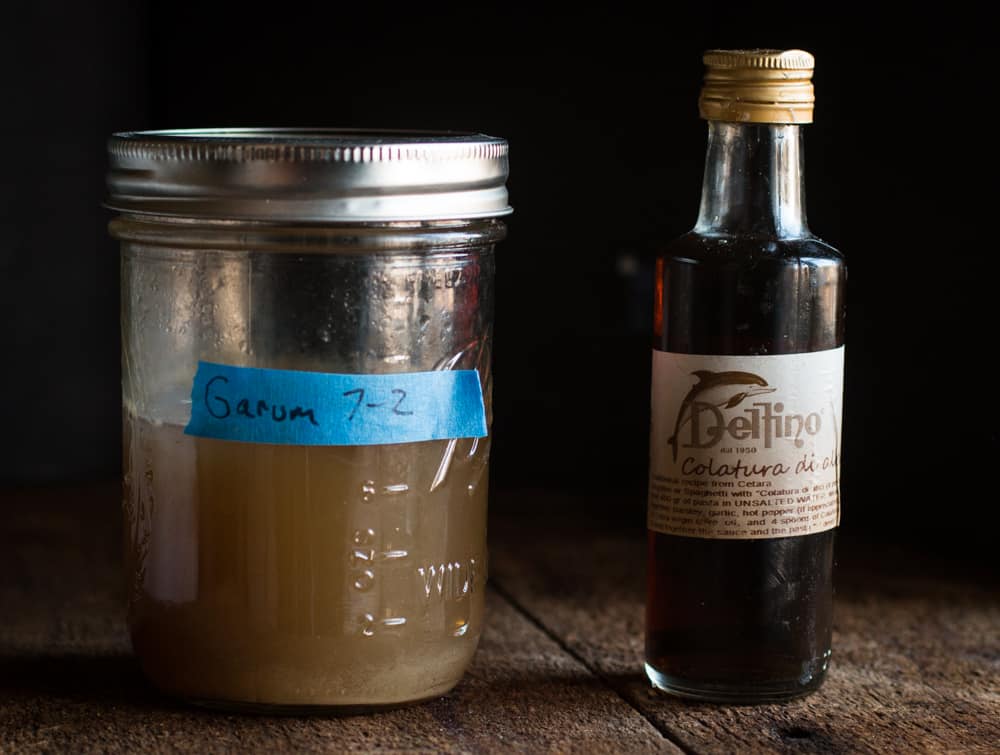
Buy your own garum
Delfino brand colatura d'alici is a trusty brand a number of local exotic purveyors I know carry.
Further Reading on Garum and Roman Cookery
Last week a new book was published outlining how to make new-styled garums out of everything from beef to shrimp with rose petals! It is not a book for beginners of fermenting anything-it's some of the most advanced culinary wizardry I've seen.
But, the methods are doable with some research, and you can cut the time it takes to make garum down from 6 months to 9 weeks apparently. My first batch of lamb tongue garum inoculated with koji rice is fermenting right now. I'll keep you posted.
The Noma Guide to Fermentation
Naturis Historia (More on the ancient world than food specifically)
Geoponika (A history of ancient agriculture)


Steven VanAernem
Hi Alan. I am obsessed with food history and the fact that someone can sit in a Burger King and open a foil container of ketchup is due to Garum, more importantly the Malay version which had zero tomatoes and nary a hint of sugar.
Glutamates and time in the sun are what give us umami goodness. I am eager to chase that dragon and I have a couple questions. I live 1 mile from Lake Huron, so fish heads and guts I can get by the bucketful. I also have a fishmonger friend in Maine who would ship me what i need of heads, guts, and frames(frozen). He sent me a pillow case sized bag of uncooked shrimp shells for stock...a good contact. What do you think of combining fresh water and salt water fish for a garum? I would use the sun method in a clearing my girlfriends grandmother owns. Away for noses and angry neighbors. Michigan is losing spring and summer heat every year, but I could eke out 5 maybe 6 months. I also thought about adding in some dried Kombu, maybe some dried shiitake mushrooms to really up the glutamates.
What do you think? Any extra guidance or tips would be greatly appreciated.
Thank you sir.
Steven
Alan Bergo
Sorry I've been pokey getting to this. Busy year. Fine to combine salt and fresh water fish for garum, especially with shrimp shells. Romans made many similar sauces with crustaceans and combinations since they have lots of fresh and salt water.
Mark Sprinkle
Awesome. My mother taught Latin and Roman culture in Texas for 30 years, including sections of curriculum leading to big collaborative meals based on Apicius. Before Asian markets were much of a thing in our area she found Nucmam, the Vietnamese version of fish sauce, and would parcel out small ziplock bags to students to use where the recipes called for Liquamen. Those baggies went out with stern, even apocalyptic warnings about what would happen if they came open in a backpack or, worse, your car. We're close to the coast (in VA now) and I'm thinking about a trip over to the market for some fish entrails right now, if only to terrorize my own sons. Thanks for sharing these culinary adventures.
Alan Bergo
The thought of carrying fish sauce in a plastic baggy in your backpack is terrifying for sure. Good science project for the kids! Thanks Mark.
Jeanne
A most interesting field experiment! Btw Japan has several commercially available fermented fish and seafood products, though I don't know if these are available in the US. The generic term for these highly esteemed fish/seafood preserves is "shiokara" [literally salt (shio) salt[y] (kara)], and often accompany sake or or plain steamed rice. Salt-fermented salmon innards are called "mefun". The sea cucumber's innards are salted for "konowata". Squid innards are also fermented, with or without the ink; bonito (katsuo) innards are used to make "shuto". Perhaps the most unusual are the salted innards and flesh of the sea squirt, which resembles a cactus fruit. Other than the Japanese fish sauce called "shottsuru", shiokara are eaten on their own and rarely used for seasoning. Other Asian countries will have similar umami-packed seasonings, such as fermented shrimps, anchovies, tiny oysters or clams in the Philippines. Korea, Malaysia, Indonesia, Thailand and other SEAsian countries will have a similar range.
Alan Bergo
Thanks Jeanne.
eub
(Scratch that about the salt ratio being incompatible, it shouldn't be.)
eub
The product from Aspergillus fermentation of lamb tongue I'd love to hear how it comes out. But will it be a garum? That has been from autolysis (some say with lactic acid bacteria, I don't know), always with a quantity of salt in the mix that I expect is incompatible with koji. Needs guts in!
I've seen people use koji for accelerated dry aging of whole muscle cuts, but you're heading further into fungal digestion it sounds like. And don't people use the juice drained from miso making? Hard to Google, you get e-cigarettes...
Lenny Russo
I am reading this while in Rome just up from Sorrento on the Amalfi Coast. I kept waiting for you to get to colatura. Thanks for not disappointing me. By the way, the fish has been fantastic. I will share some photos with you and Pilar when next see each other.
Alan Bergo
Jealous of your trip to the boot, Chas told me you and Mega were over there! Can only imagine what the fish is like, and I'd love to see some pics when you get back sometime.
Susan
My favorite alternative to expensive but delicious colatura is Korean fish sauce, available from your local Korean supermarket. The brand (I don't read Korean so I can't tell you what it is) doesn't have sugar in it, unlike some others. Been planning a taste test against my coveted bottle of the colatura di alici but can't bring myself to open it.
Truly amazing how a splash of the fish sauce on pasta or risotto really kicks up the flavor.
Thanks for the great column.
Alan Bergo
Yes, Asian fish sauces are a good alternative. I had to make some Spaghetti with colatura last night since writing this was making me crave it. Red Boat fish sauce is a dependable brand.
Susan
I like Red Boat too, but I was surprised to find recently the Korean brand seemed to have a deeper flavor.
Steve Bergo
Alan - you made the greatest meals considering what we had to work with. Still long for one of those walleye fillet o fish sandwiches you put together when we were running out of things to make with another days catch of walleyes. Walleye for breakfast, lunch and supper.. it was rough. Glad I didnt see the fish sauce cooking, looks rough.
Dad
Alan Bergo
Yeah cooking the fish sauce was one of the more caveman things I've made, even for me. It was a great trip, I'll remember it for a long time.
Peter Glatz
I absolutely love the Garum post. I write a food column for a newspaper and Noma’s publisher sent me an advance copy of their book- so I’ve been working through the recipes. Your garum post was so well-written and informative.
I travel and write and cook in a school bus (berthabus.com) and would love to come to Minnesota next spring or summer and do a story about you
Alan Bergo
Wow. Love the school bus Peter. And yes, the NOMA book is some serious fermenting homework. Spring and Summer are great in MN, Winter is pretty damn cold right now. Stay in touch, jealous of your stage with Chef Regan.
Nicole Novak
I thought it would be nice to add that the yellow strainer you used might be an antique Tupperware. I know this because I still have and use this strainer all the time. HaHa
Alan Bergo
Ha! It probably is. The equipment in the lodge was a really old combo of hand-me downs and things people have forgotten.